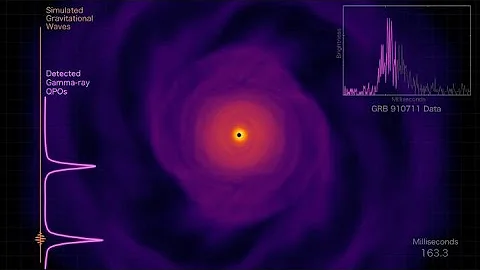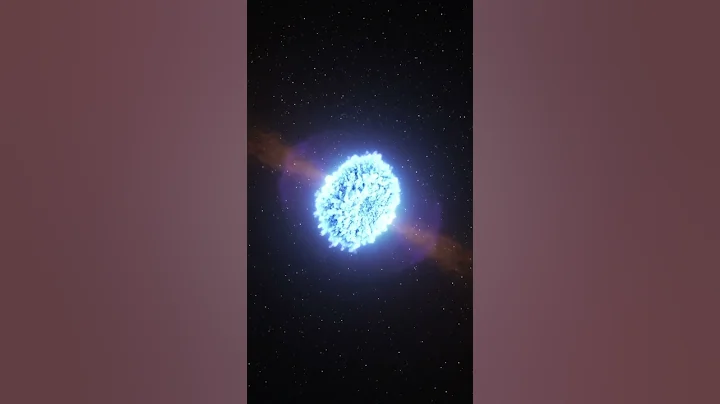
Scientists observe the expanding shared envelope of binary stars flung into space (artistic image). (Photo provided by Yunnan Observatory of the Chinese Academy of Sciences)
About half of the stars in the universe exist in the form of binary star systems . In modern astronomical theory, the formation of important celestial objects such as double black holes, double neutron stars, and double white dwarfs are the result of the evolution of the shared envelope of binary stars. However, nearly half a century after the shared envelope evolution process of binary stars was proposed, shared envelopes have never been observed before.
A few days ago, The research team of Academician Han Zhanwen of the Yunnan Observatory of the Chinese Academy of Sciences and the Australian National University research team "saw" for the first time the expanded shared envelope thrown into space by the binary stars. The shared envelope of the binary stars was discovered through observation. direct evidence of evolutionary processes. The relevant results were published online in the British "Monthly Notices of the Royal Astronomical Society" on the 7th. Schematic diagram of the evolution of the envelope shared by the

binary star. (Photo provided by Yunnan Observatory of the Chinese Academy of Sciences) In the
binary star system, two stars orbit each other under the influence of gravity. The shared envelope evolution of binary stars is a crucial process in the evolution of binary stars. In this process, one star in the binary expands violently due to material loss, wrapping the other star in its outer envelope, forming a shared envelope.
"The binary star system at this stage is like a ' double yolk egg '. The binary star is two 'yolks', and the shared envelope is the 'egg white'." Han Zhanwen said that the evolution of the shared envelope will determine the outcome of the binary star evolution. , two stars merge into one star under the influence of a shared envelope; or the shared envelope is ejected, and the two stars form a short-period binary star. Numerical simulation of the shared envelope evolution of the

binary star. (Photo provided by Yunnan Observatory of the Chinese Academy of Sciences)
In this study, the research team discovered a close hot subdwarf binary 23,000 light-years away from us through observation data from the Kepler satellite and the Australian National University's 2.3-meter wide-field telescope. J1920, the two stars are getting closer and closer, there is an expanding shell around them, and they are leaving the binary star at a speed of about 200 kilometers per second. This expanded shell turned out to be a shared envelope ejected by the binary star about 10,000 years ago.
In addition, the continued orbital contraction of the binary stars shows that the residual material of the shared envelope and the orbital motion friction of the binary stars will take away the orbital angular momentum , which is a new type in addition to the hysteresis effect, gravitational wave radiation and mass loss. Angular momentum loss mechanism. Schematic diagram of

J1920. (Photo courtesy of the Yunnan Observatory of the Chinese Academy of Sciences)
"The significance of this discovery is that it turns a theoretical assumption into reality. Not only did scientists see observational evidence for the shared envelope evolution of binary stars for the first time, but they can also accurately characterize it through observations. This key process." Han Zhanwen said.
Coordinator: Chen Fang, Liu Xinhui
Reporter: Zhang Quan
Editor: Company Commander Yan
Produced by Starry Sky Studio





















